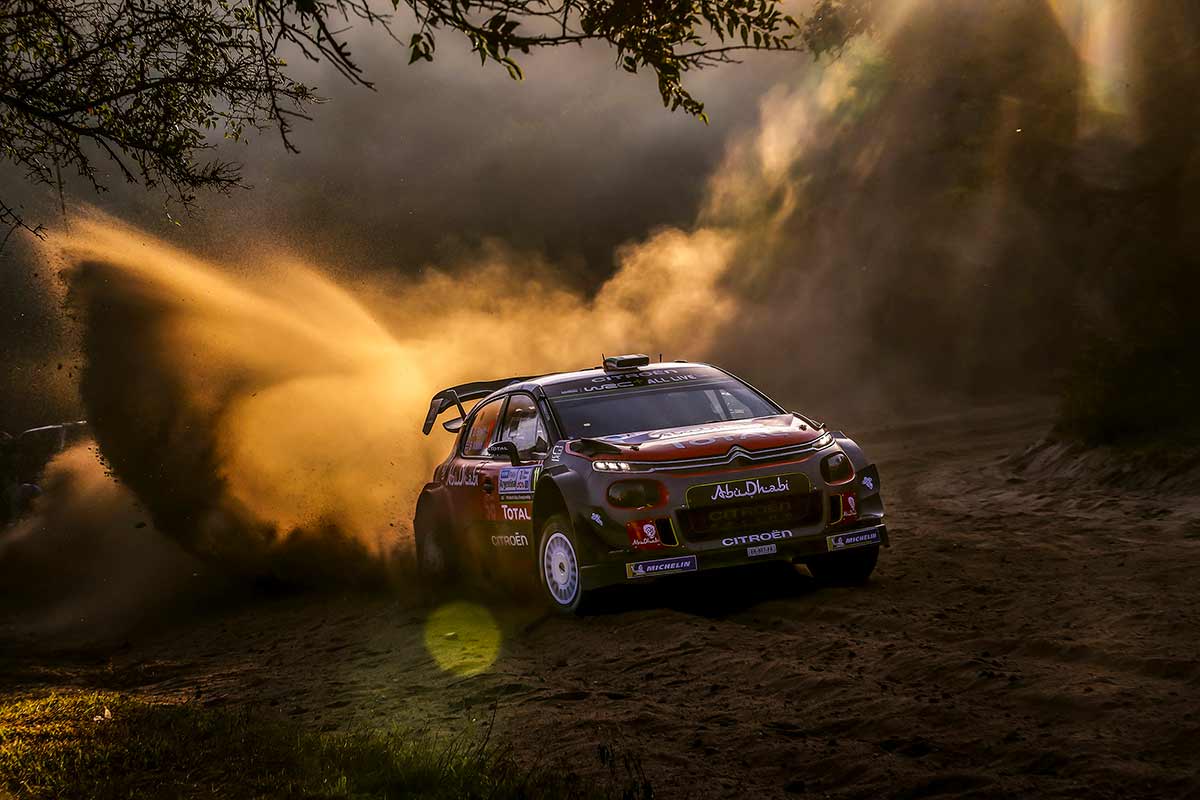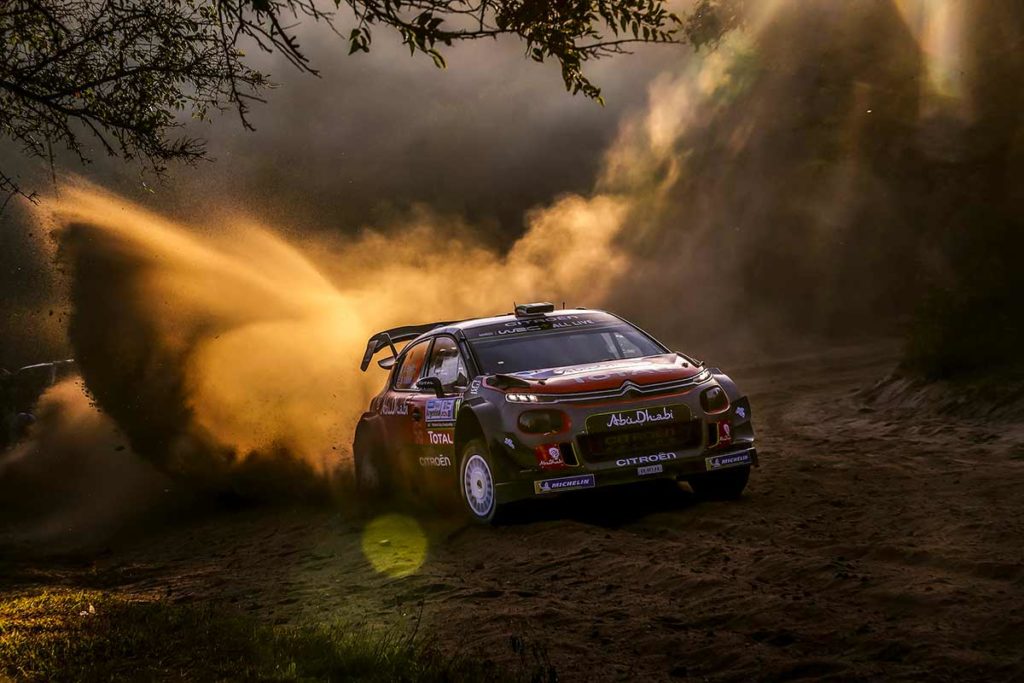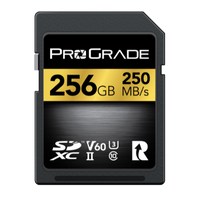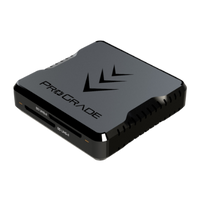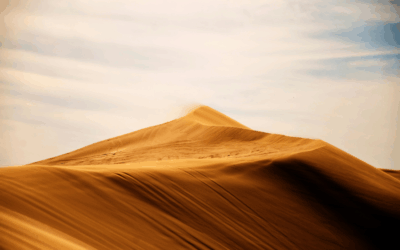Speed Is Key
I love speed. This is just as well, as I have spent my entire working life photographing race and rally cars. My focus now is the World Rally Championship (WRC). WRC pushes the extremes of man and machine to the limit. Whatever the conditions—glorious or treacherous—the show must go on. I photograph this sport in the blistering sun, dust clouds, thunderstorms, gale force winds, fog, plus snow and ice. My job is to get the shots, then deliver as quickly as I can.
I do my reconnaissance beforehand by looking for the best locations to shoot, and places where mobile reception is reliable (I must create great images, but also deliver ASAP). I prefer to shoot alone; I want unique shots and the fewer the distractions, the better.
For locations that I cannot access on foot, I drive in as closely as possible, park, then hike (sometimes up to 3 km).
What Is In My Motorsports Camera Bag
I often carry 15 kg of equipment, and what goes into my bag varies rally to rally and location to location. There are two Canon™ EOS 1DX Mark II bodies I use. Lenses are selected per location needs. I use the 70-200mm F2.8L zoom and primes from 14mm to 400mm. For more extreme wide action shots, I pull out a set of remote control transceivers plus tripod and then put gear in places where it would be too dangerous to stand. ProGrade Digital 512GB CFast™ 2.0 cards live in my cameras full time.
I’m often rushing to an airport, so I’ve been known to slip memory cards into a pocket and forget–even put a CFast and an SD card through the clothes washing machine after a WRC trip. To my relief, the cards survived and used again. I wouldn’t recommend this though.
During each WRC rally day, I may create up to 1,600 images. That’s roughly 50GB, which equates to 200GB per event. ProGrade Digital CFast cards give a 550MB/second write speed, which keeps up with the Canon buffer and permits me to shoot at 10 frames per second with uninterrupted bursts of 20+ images. Impressive–my RAW files are around 21MB each.
Speed Post-Shoot Is Also Of The Essence, So File Back-Up Must Be Fast Too
Seconds literally do count in WRC–for both rally driver and photographer. I make the most of every instant, so if I happen to have a colleague doing the driving, out comes my laptop while on the move. Alternatively, if there’s watering hole or restaurant, the laptop replaces my dinner plate. If I am editing in the hotel, I take all the cards out of the cameras and start working. No matter where I go, the ProGrade Digital dual-slot card reader helps me move files to my laptop. I said that I love speed; their USB 3.1, Gen. 2 provides a 1.25GB/second transfer rate.
Every February I shoot WRC Sweden, where temperatures can plummet to -30°C. Two weeks later I’m on a plane to shoot Rally Mexico where +30°C is the norm. In the old analog days, the camera battery would drain quickly when frozen and film would get heat damage. Today’s equipment is so reliable that you hardly notice any shift in performance through that 60°C temperature range.
What Makes A Good Rally Car Photo?
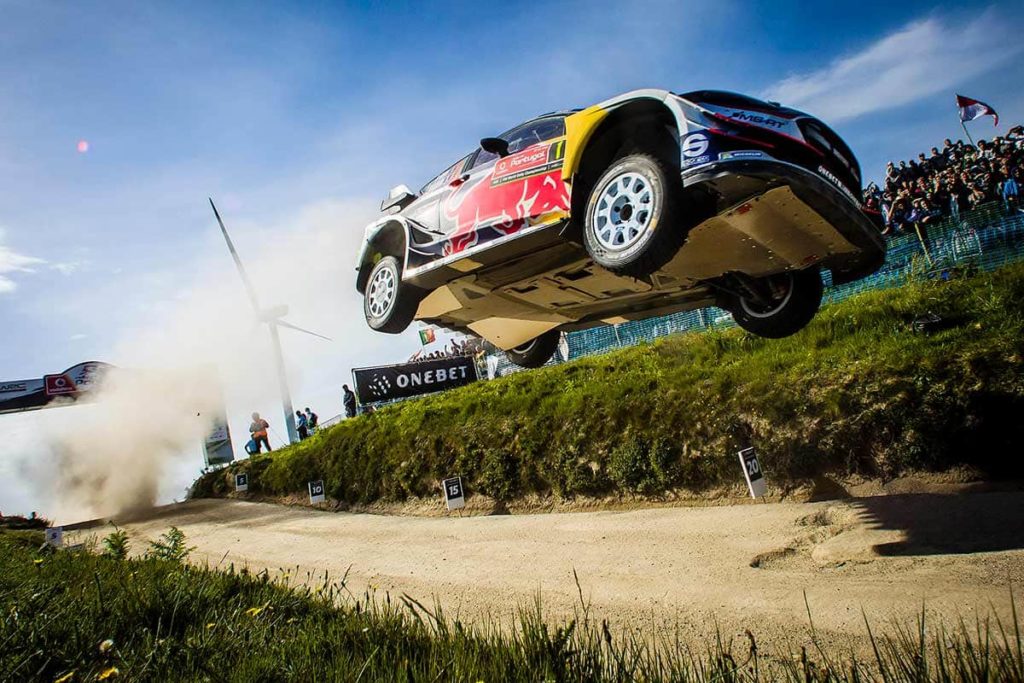
I take care of my cameras and lenses; without them I am nothing. As such, I use only the best media storage available. This is why ProGrade Digital is in my story. The CFast cards, coupled to their USB 3.1, Gen. 2 dual-slot readers for SD and CFast, make a winning combination. Totally reliable, I never have to worry about their operation. This lets me focus on my own photo rally.
I’m often asked what makes a good rally photo. It comes down to a matter of taste. For me, the best images are the ones that still look great if there is not a rally car showing. I prefer scenics—photos that showcase the diverse locations that WRC visits. Then too, I love big action pictures; WRC drivers know how to put on a show.
Colin McMaster is co-founder of McKlein Photography, an agency and specialist publisher which specializes in World Rally Championship photography. In 2018, Colin will cover all 13 WRC events, from Monte Carlo to Italy, from Finland to Australia and more. Colin is a ProGrade Digital Ambassador.
